Last updated: August 9, 2023
Ever since I discovered dragon fruit, I have been on the hunt for more exotic fruits that we can’t easily find in the major supermarkets.
I recently stumbled upon the kiwano fruit, otherwise known as kiwano melon or horned melon. This odd-looking fruit goes by many names, and its unusual, spiky appearance immediately caught my attention when I first saw it.
Without knowing what it actually was, I decided to buy it so I could try it out. And I must say that I was pretty surprised by its flavors and texture.
So, what exactly is this strange fruit with spikes? And what are some of the nutritional benefits? Let’s find out more about the unique kiwano!
Quick navigation:
What Is Kiwano Fruit?
The kiwano is indeed a fascinating little piece of fruit. Yes, it’s a fruit, not a vegetable. The spiky, yellow/orange skin of kiwano melons will immediately grab your attention.
And when you cut one open, the soft and bright green flesh may surprise you even more.
The fruit is native to southern and central Africa, but has also been grown in New Zealand, Australia, and parts of the USA in more recent times.
As you can see in the image below, the inside of this fruit looks very similar to the inside of a cucumber. But the outside looks more like a spiky melon.
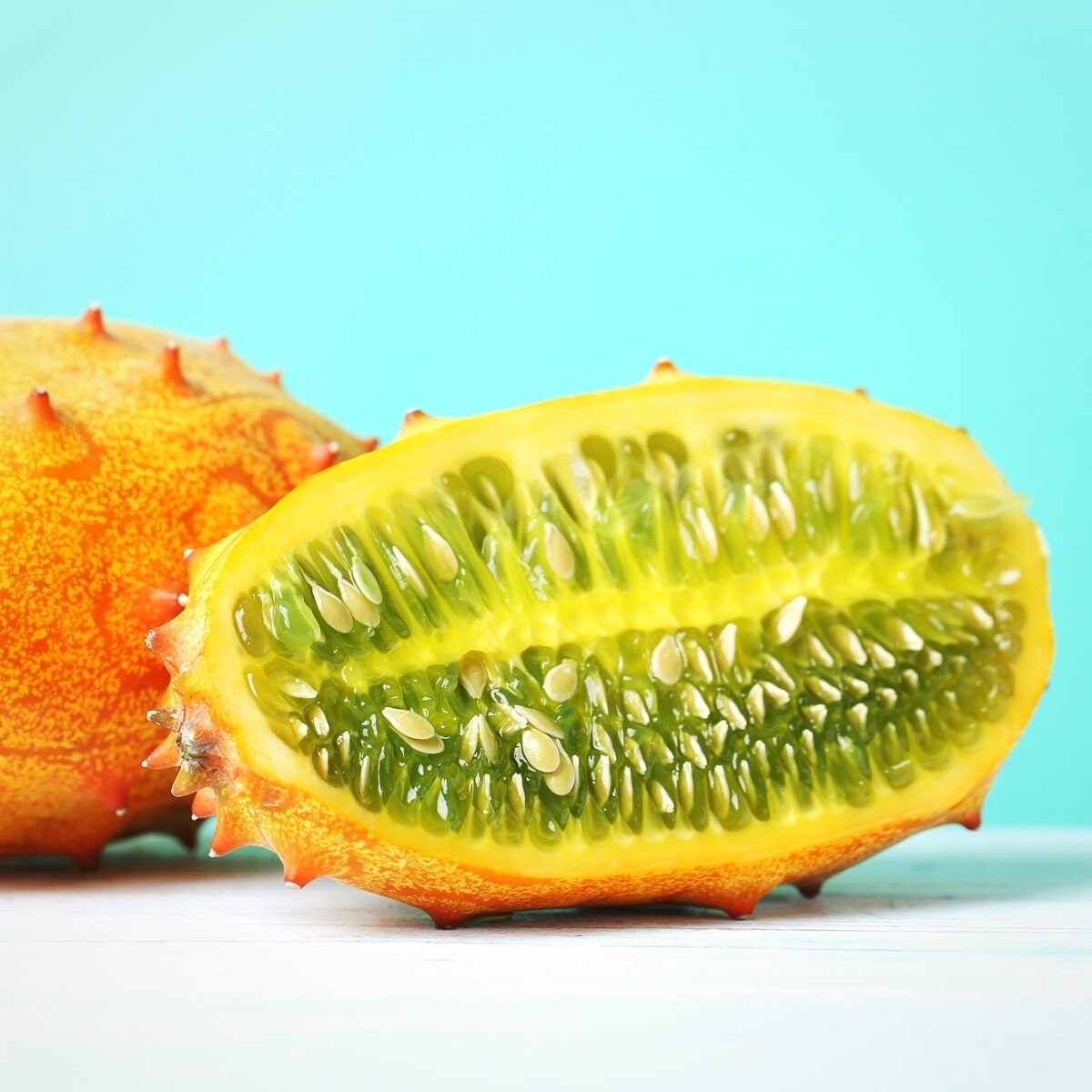
So what is kiwano? A cucumber, a melon, or both? It seems as if this fruit is struggling with an identity crisis, but the kiwano is actually a member of the melon family and the cucumber family.
The inside of the fruit is interesting. You’ll notice that it’s full of seeds, and these seeds are actually edible. The texture around the seeds is like green jelly, which may taste a bit weird the first time you eat it.
What Does It Taste Like?
So, what does horned melon taste like?
The general opinion is that it tastes like a mix of cucumber, zucchini, kiwifruit, and banana. I would say that that is about right, but I would like to add cantaloupe into that mix.
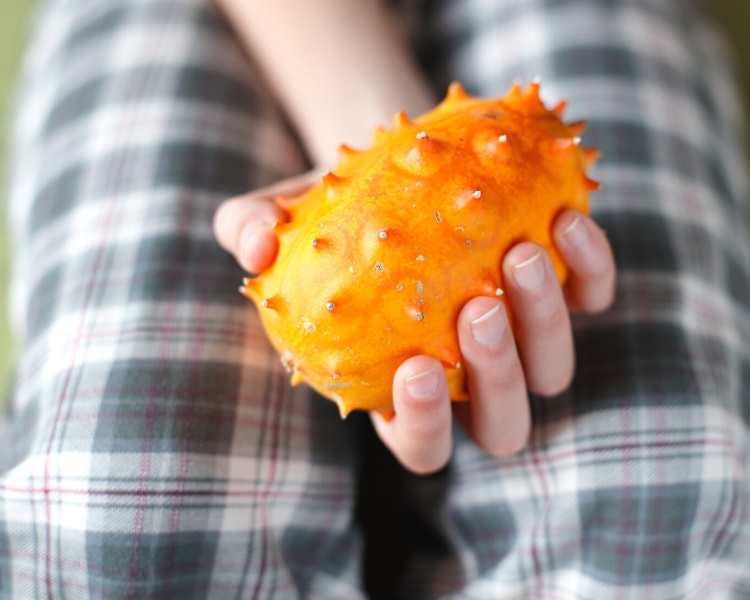
I also found that the taste, in general, is not very potent or sweet; it’s kind of neutral. And that’s good in a way, as it won’t be too much of a shock when you eat it for the first time.
However, when a horned melon is very ripe, the banana flavors will become much more prominent.
Other Names for Kiwano
The kiwano goes by many other names, depending on where you are based.
With its weird looks and the characteristics of cucumber and melon mixed together, it should be no surprise that the kiwano melon has been given many exciting names.
The scientific name for the kiwano fruit is Cucumis Metuliferus. Cucumis is a reference to the cucumber and melon family, while metuliferus is a Latin word that refers to the spikes on the fruit.
Here are some other known names for the kiwano fruit:
- Kiwano melon
- Horned melon
- African horned melon
- African horned cucumber
- Melano
- Jelly melon
- Spiked pear
So, if you’re on the hunt for a kiwano melon and you see any of these names, then you’ve probably found the right fruit.
Have you come across other names for kiwano? Let me know in the comments, as I’d love to know!
Consuming a Kiwano
Cutting and eating a horned melon is easy, but to get the most out of the fruit, the following tips may come in handy.
First, you should make sure you choose a ripe kiwano. A ripe one typically is not too hard (and not too soft either) and has an orange color rather than yellow or green.

Also, be sure to wash the fruit properly before cutting to avoid getting your knife dirty or contaminated.
You can “drink” a kiwano melon by cutting it in half and then squeezing the contents of one half into your mouth. The seeds can also be consumed, so you can drink everything you can squeeze out of the fruit.
However, the common way to eat this fruit is to cut it in half and then scoop out bits and pieces with a spoon. Do the cutting and scooping on a clean cutting board so you can eat the leftovers that you may spill.
The seeds and jelly-like flesh of kiwano melons are excellent ingredients for fruit salads. The juice also does very well in cocktails. You’ll have your guests wondering what’s in their drinks!
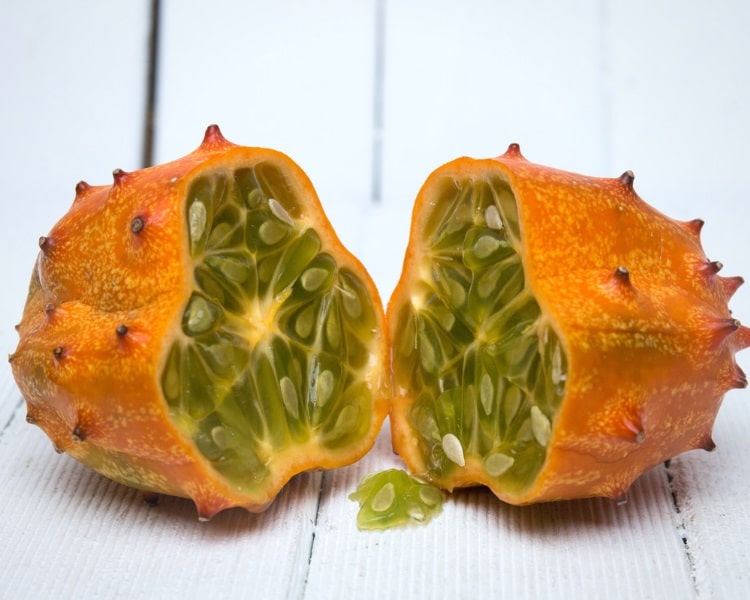
And, of course, kiwano melons can easily be added to green smoothies as well. I’ve done that many times to add extra flavors and liquids to my smoothies.
But honestly, because they are so unique and also a bit pricey, I prefer to eat a kiwano melon on its own. That way, I can best enjoy its unique flavors. Oh, and don’t just throw the shells out. You can use the hollow shells as a fun way to serve desserts!
For a more comprehensive guide, including practical storage tips and recipe ideas, read my article explaining how to eat kiwano melon.
Nutritional Profile and Benefits
Kiwano melon has quite a rich nutritional profile boasting a variety of nutrients, vitamins, and minerals.
Let’s have a look at the most essential nutrients that exist in kiwano melons.
| Kiwano Melon Nutritional Profile (raw – 100 g) | |
|---|---|
| Water | 88.97 g |
| Energy | 44 kcal |
| Carbohydrates | 7.56 g |
| Protein | 1.78 g |
| Fat | 1.26 g |
| Minerals | |
| Potassium | 123 mg |
| Magnesium | 40 mg |
| Phosphorus | 37 mg |
| Calcium | 13 mg |
| Iron | 1.13 mg |
| Vitamins | |
| Vitamin A (mcg RAE) | 7 μg |
| Vitamin A (IU) | 147 IU |
| Vitamin C | 5.3 mg |
| Folate (Vitamin B9) | 3 μg |
| Source: USDA | |
As you can see, a kiwano melon is very watery, low in calories, and rich in vitamins and minerals, such as potassium, magnesium, and vitamins A and C.
Also worth pointing out is the relatively high protein content. This is because the kiwano has lots of protein-rich seeds.
Antioxidants
Just like with most fruits, kiwano melon is rich in antioxidants, for example through Vitamin A with carotenoids and beta-carotene, and vitamin C.
Magnesium is also an essential mineral, used by almost all organs in our bodies. And calcium promotes good bone health and will help prevent long-term bone conditions.
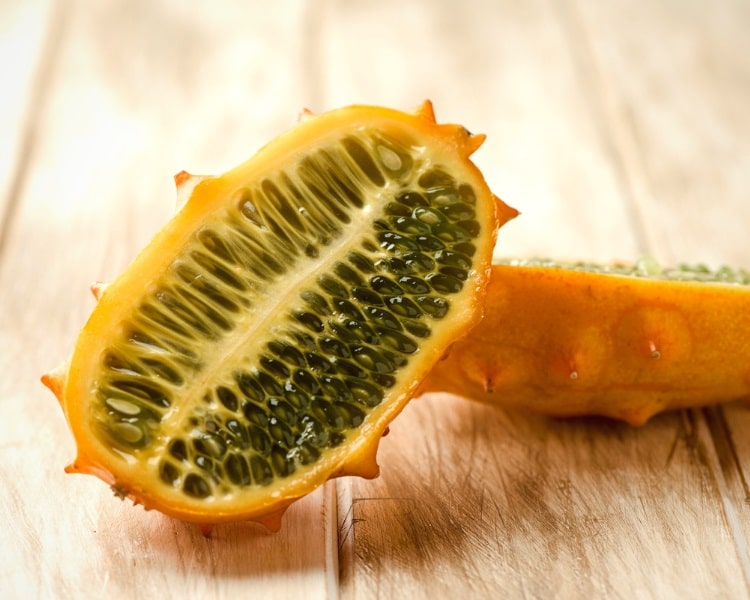
Although the kiwano fruit is indeed a healthy food and is high in essential nutrients, it’s certainly not the most nutrient-dense type of fruit out there.
Kiwifruit, for example, is richer in nutrients, especially vitamin C and calcium. But that doesn’t take away the fact that the kiwano fruit is a tasty and nutritious alternative to the more common fruits we eat daily.
Delicious Kiwano Melon Recipes
They may be hard to find, but there are some nice recipes out there with kiwano fruit as a core ingredient.
Here are three recipes for you to try out:
1. Refreshing Kiwano Melon Smoothie
A surprisingly refreshing and nutritious kiwano smoothie recipe, with spinach, avocado, banana, blueberries, and ginger.
I realize that kiwanos are expensive, but as a smoothie fanatic, I love trying out new recipes, even if the ingredients are a bit pricey.
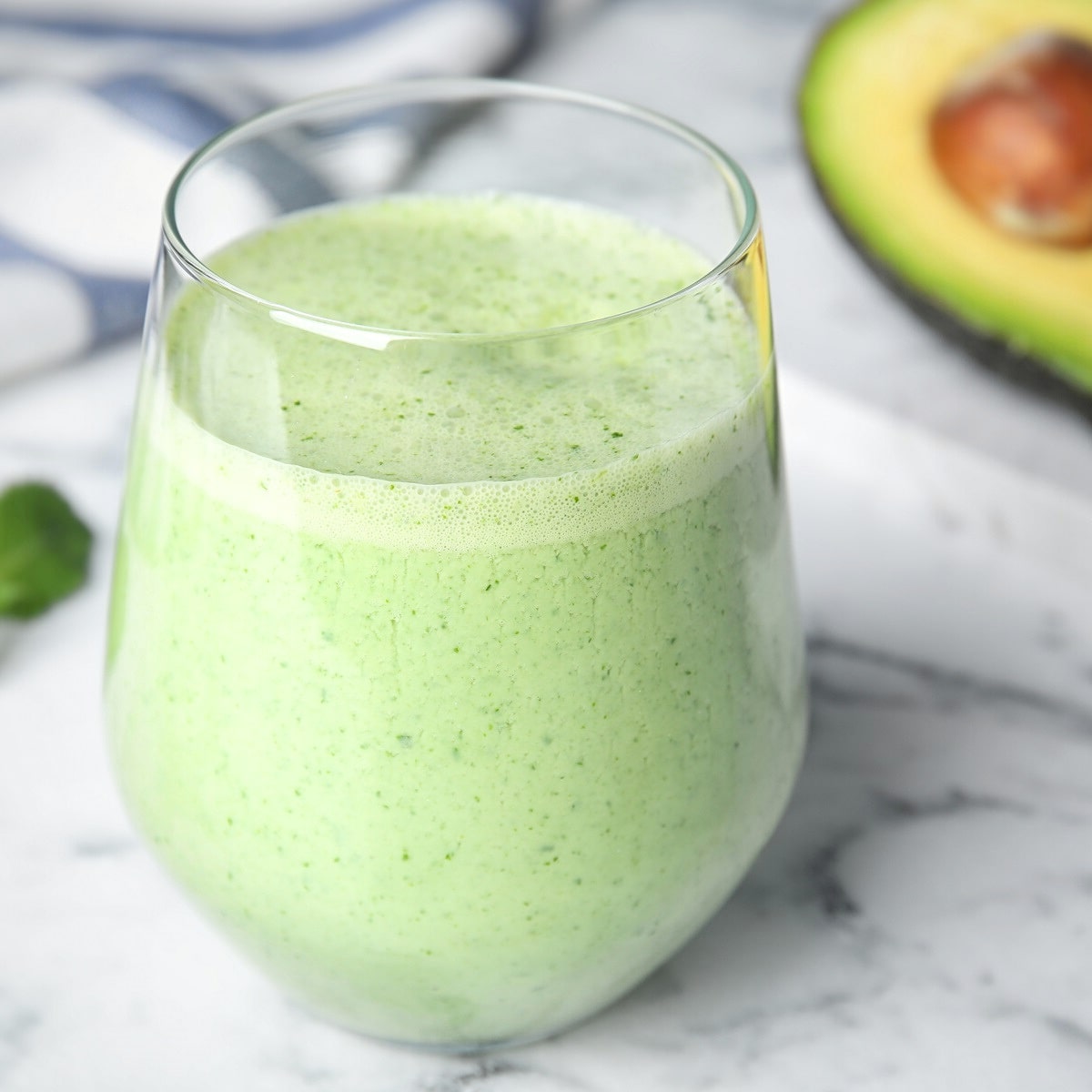
Here’s the complete list of ingredients. Feel free to experiment with other ingredients, but I find that the mix below works quite well.
Ingredients:
- 1 kiwano fruit (flesh only)
- 1 large cup baby spinach
- 1/2 small avocado (flesh only)
- 1 banana (fresh or frozen)
- 1 small cup blueberries
- 1 tsp grated ginger
- 1 large cup water
- 1 small cup ice cubes
Blend it all together, and you end up with a very refreshing smoothie that tastes delicious any time of day!
2. Grilled Beef with Horned Melon Sauce
A tasty and unique recipe for a sauce to go with beef. The sauce is made with kiwano pulp, lime juice, green onion, cumin, and garlic, mixed together in a blender or food processor.
Once blended into a nice and creamy texture, the sauce can be spooned evenly over grilled lean beef, lettuce, and cucumber.
You can find this refreshing recipe on Food Network.
3. Kiwano Sorbet
We all love a refreshing sorbet, especially on a warm summer’s day, but have you ever thought of kiwano sorbet?
This delicious recipe over at Peaceful Dumpling is definitely worth a try. It’s a relatively simple recipe with one kiwano fruit, two bananas, one apple, coconut sugar, and water.
You will need a decent blender to process it all into one super tasty and nutritious sorbet!
Final Thoughts
Unfortunately, it can be quite a challenge to find kiwano melons. But I encourage you to keep an eye out for them, especially at big fruit markets or specialty grocery stores.
The unique flavors and texture of kiwano fruit should be enough reason to try it out at least once, and the nutritional benefits are an added bonus.
Do you love exotic fruits as much as I do? Let me know what you think of kiwano and other fruits you have tried in the comments below.
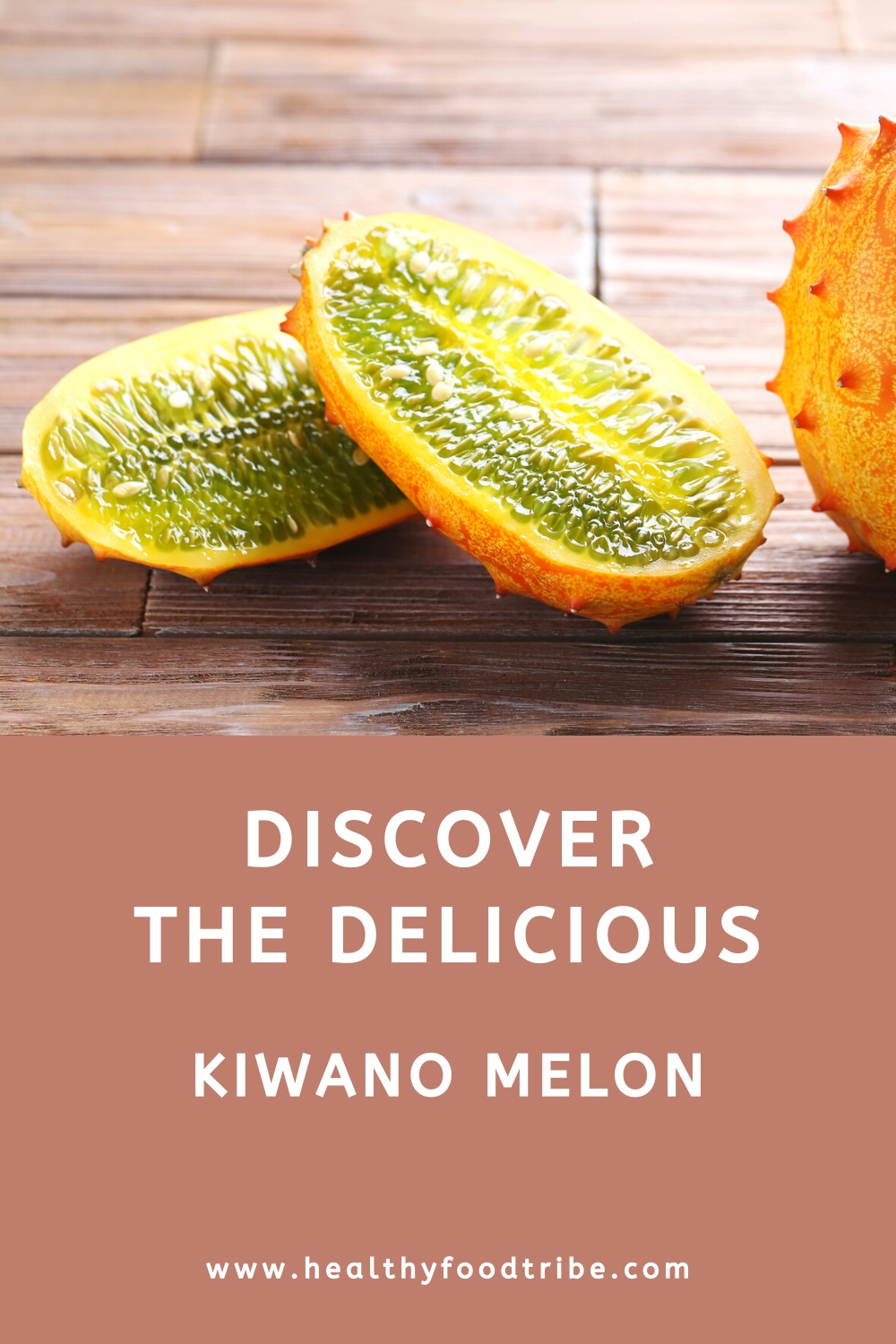
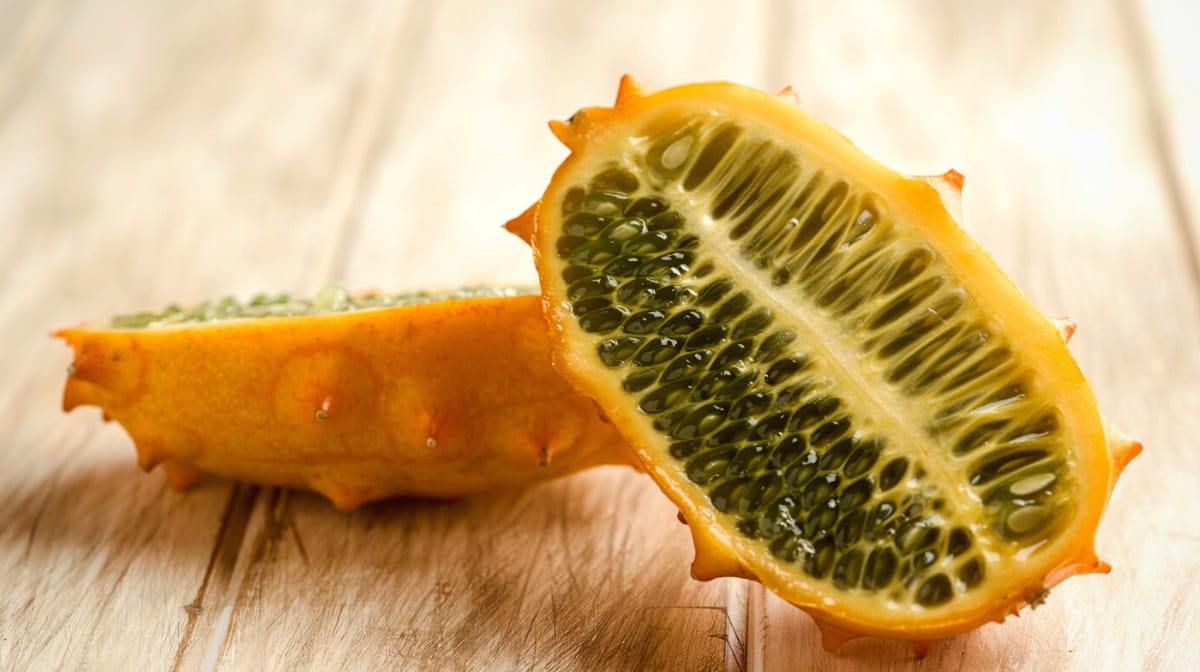
This is so amazing. But here in South Sudan, no one is growing Kiwano fruits but they grow on their own. I like it more than any other fruit but the challenge is that some of these fruits taste bitter and some have good taste. So I’m planning to plant them and my challenge here is where to get the seeds.
I tried the kiwano horned melon and I love it. I first tried it plain and it was good but when I put it in a smoothie it was delicious.
I agree, Sheila, kiwanos work very well in smoothies.
Just purchased two Kiwano horned melons yesterday at HEB for $7 each. Used half of one in smoothie this morning along with blueberries and banana. Scooped out and used seeds, not the skin. Delicious smoothie. Not sure that I will purchase regularly at this price. Am using one-half instead of whole to conserve on cost. Hoping the cut half (wrapped in saran wrap) will stay fresh until tomorrow. Wanted to try a new fruit, may incorporate in breakfast juice or smoothie on occasional basis.
Thanks for your comment, Gayle, and glad to hear you liked the kiwano. You’re right, they are very expensive, but it’s so much fun trying out new fruits and vegetables.
Just found your site when looking for info on this “silly melon” that my wife just called it. I was more adventurous and ate without all of this info above. I thought it smelled a little like aloe vera when I cut it open. It has a refreshing flavor. I think I’ll throw some seeds into my planter box. I paid $9.99 for it in a Safeway in Washington State!
That’s awesome Eric, glad you liked the fruit. I like the aloe vera comparison haha.
I live up in Ontario Canada and enjoy growing these in my veggie garden. They grow super fast in my short summer climate.
Very good. 3$ per piece available in Kenya.
Tried it today for the first time. Very cool and crisp, like eating a cucumber.. reminded me of eating boba. Would eat it again for its nutrient value. Cost was $5.50 in central California.
Glad you liked kiwano fruit, Dori. And boba, that’s an interesting comparison!
I grew African horned melon vines in my garden in central New Jersey! They climbed up the trellis and were heading for the roof of my garage so I had to cut the top back twice. The vines even tried to get into the garage through a window that had a crack! Had to yank them back out of there twice. I saved seeds from the harvest for future use.
Pat’s horned melon juice recipe: scoop out the insides of one fruit, green seeds only not yellow rind. Put it in a glass jar and fill jar with boiling water. I use a 24-oz (710ml) pickle jar. Put the lid on then shake it around several times, let it steep and cool. Put jar in fridge, let steep for several more hours.
To make the drink: strain the juice into a tall glass half way, add water so glass is 3/4 filled (to dilute it a little), add honey and splenda to taste, stir, then add ice. It tastes like a green lolly pop (lime) with a slight hint of green banana. Store the unused portion in the jar in the fridge for up to 3 days.
I’m growing some in Magalia, California! (2400′ elevation) seems to be pretty easy to grow, like a climbing melon. Bought one at the grocery store last summer and some seeds ended up in my compost pile and grew out of a garden area where I spread my compost this year. I think I will continue to grows these crazy melons!
When he was alive, my father actually grew some and sent them to the markets in Sydney and Melbourne. Used to get between $A 11 and $A 17 for a tray. The market owners used to call him the “Kiwano King”. I wish I had some nice land where no frosts happened. could make a good earning.
Hi Donna,
Thanks for the info on the horned melon! I bought one a week ago at the grocery store because it just looked so funky. Of course, then I wasn’t sure what to do with it. I dove in today and tried half the goopy middle in a smoothie. It has some texture due to the seeds, and a bit of a cucumber vibe, but it’s tasty!
Katrina
Glad you liked it, Katrina 🙂
Is the Kiwano skin edible? I blended everything together with seeds and skin.
Hi Peter, I personally wouldn’t eat the skin, but I couldn’t find any sources that say the skin is toxic so I am guessing it should be fine.
Yes you can eat the skin too and you can eat it whilst green. I am growing kiwanos now in Kansas USA. I am originally from Southern Africa.
The Kiwano can also be used as a vegetable much like a cucumber, in salads. Just discard the skin. Very nice in summer salads of all varieties.
Growing wild in Antalya Türkiye. Going to pick one today.
Just harvested 10 kiwano fruits from my garden in Central Texas. The vines grew vigorously. They did take longer to fruit than regular cucumbers. Oh, they love the Texan heat. I plan to deseed them and add them to smoothies or juice them.
Every week my family has a day where we try something new. Today we bought a dragon fruit and a kiwano horned melon. My children absolutely loved the horned melon! So did my husband and I! The dragon fruit was very delightful too I must say. I refuse to have raised picky eaters. I love the fact that my children will try anything at least once. I tell them all the time you’re not allowed to say you don’t like something if you’ve never put it in your mouth.
Thanks Laura, that’s such a great idea to have one day each week to try something new, love it!
Thanks so much for your article. I used to eat kiwano fruit a lot when I was in Zimbabwe.
Over $7 each here in central Texas! Very mild flavor, a bit like a cucumber, a kiwi, and an unripe banana.
I probably wouldn’t buy one again at that price, but at least I can say I tried it!
Glad you got to try kiwano, Baylee! And yes, $7 is a bit much for a fruit.
Hi Donna, my name is Abraham from South Africa, I am currently growing the kiwano fruit and I would like to know if there is a market where I can import them in bulk.
Hi Abraham, I don’t have info about importing, but it’s so nice to hear you’re growing kiwano fruits in South Africa!
I grow this Melon in Kansas
Hi Guys,
I am looking for kiwano fruits here in Connecticut. Anybody knows where I can get some or if I can order from out of state? Any websites?
Thank you and I appreciate the information.
Kim
Hi Kim, I have a small farm in South Africa where I grow kiwano fruits, I can supply for you if you are interested.
I can mail them when mine are ready. I have planted them. In my third year growing them in Kansas.
I currently have a vine full, prolific fruiter. I am juicing the whole melon semi green with other fruit and yummmmm, very delicious.
Wow that does sound delicious (and nutritious) indeed, thanks Jane.
You are all missing out on the best part! Picked at about 2/3rds full size when the seeds are still soft they make excellent cucumbers. Peel and dice into a salad. I do scoop out and sweeten the ripe fruit, but this can’t begin to compare to their usefulness as a vegetable. After all if you leave normal cucumbers on the vine they turn orange and sour too. They are incredibly productive with one vine covering about 100 square feet and producing 6-8 cucumbers per week when harvested young. They smother any weed in their path. They do not need watering once established and will often plant themselves and produce without any help at all. My personal favorite edible plant hands down.
I juiced the thing. Peel and all in my masticating omega juicer. Juice came out sour but tasty. $4 a pop here in Arizona.
It’s a $5 cucumber!
But a very special cucumber 🙂